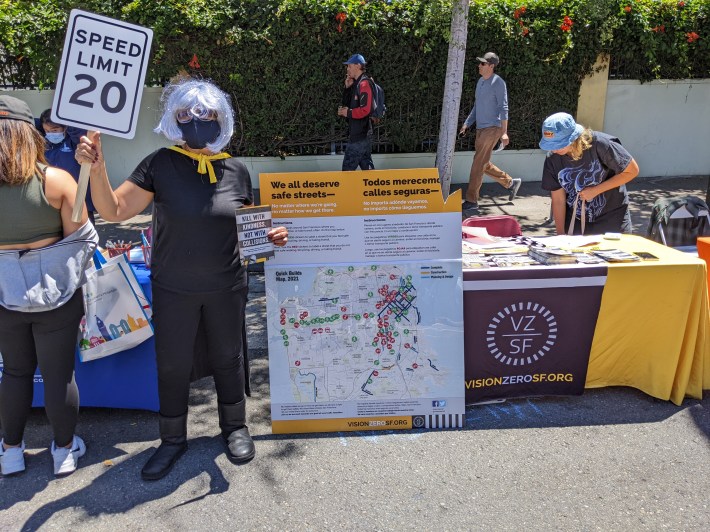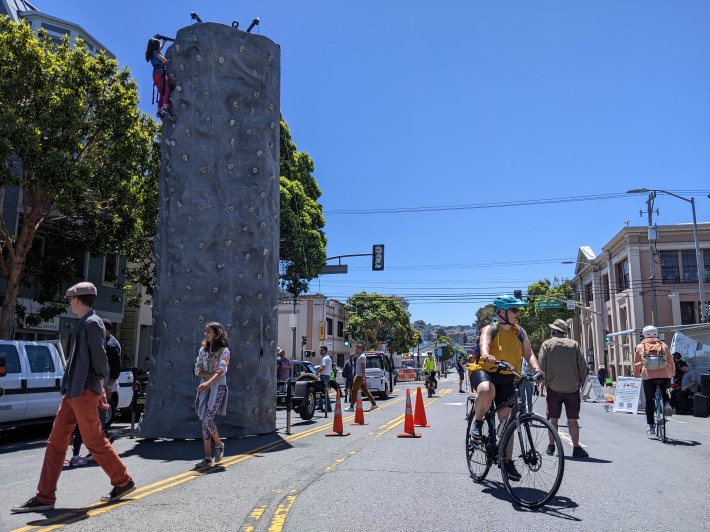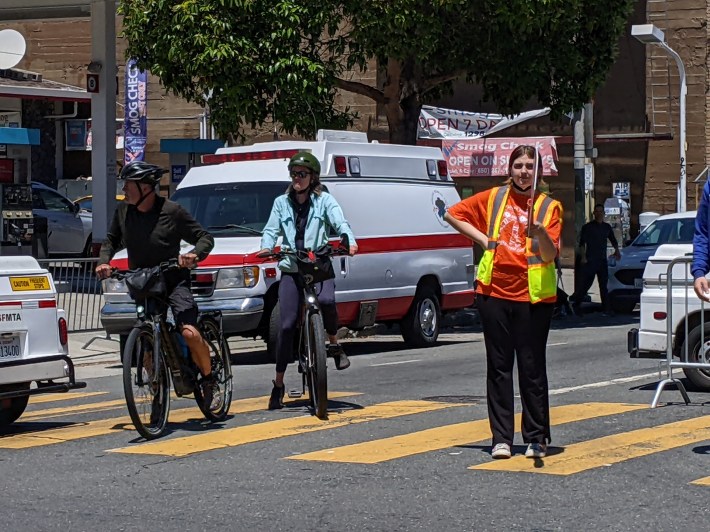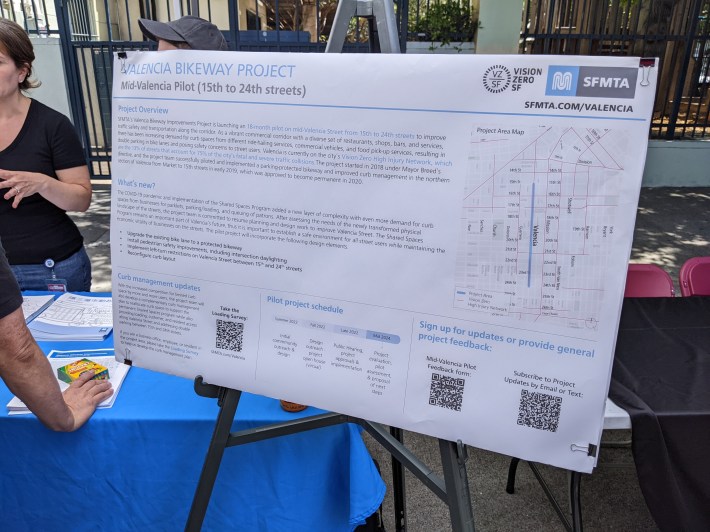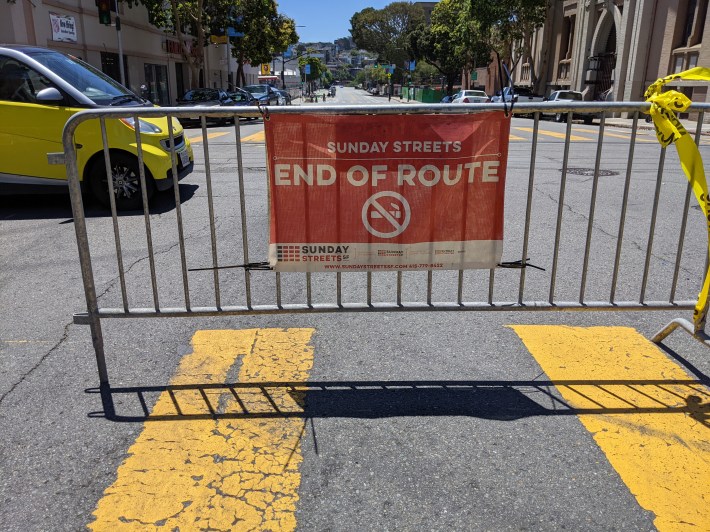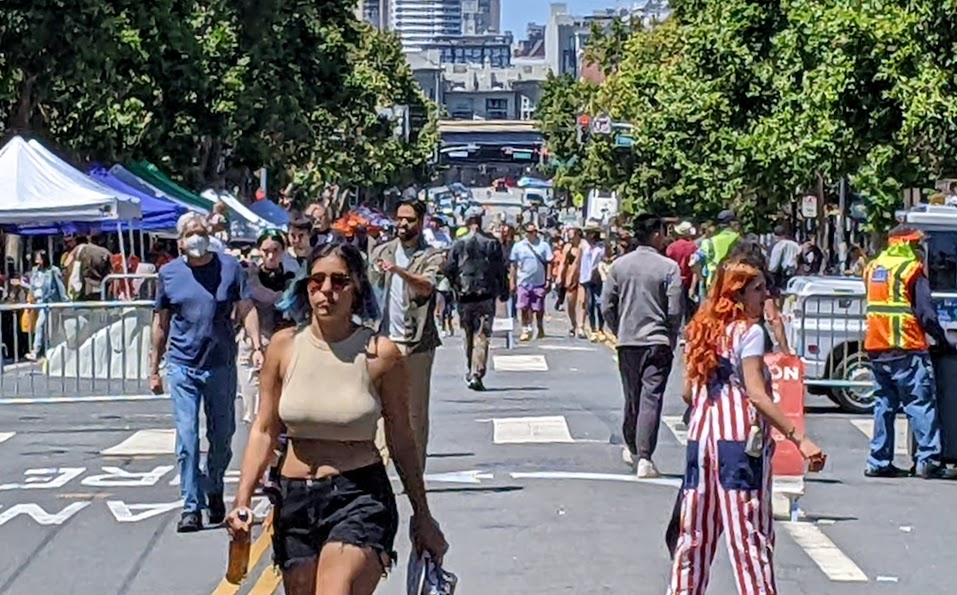Note: GJEL Accident Attorneys regularly sponsors coverage on Streetsblog San Francisco and Streetsblog California. Unless noted in the story, GJEL Accident Attorneys is not consulted for the content or editorial direction of the sponsored content.
Sunday Streets returned to Valencia Street for the first time since the pandemic, from 14th to 26th. The event again demonstrated how streets can be places of celebration, instead of just automobile throughput. "This is such a great street despite itself," said Livable City's Tom Radulovich, which organizes the event. "This should be the best biking street."
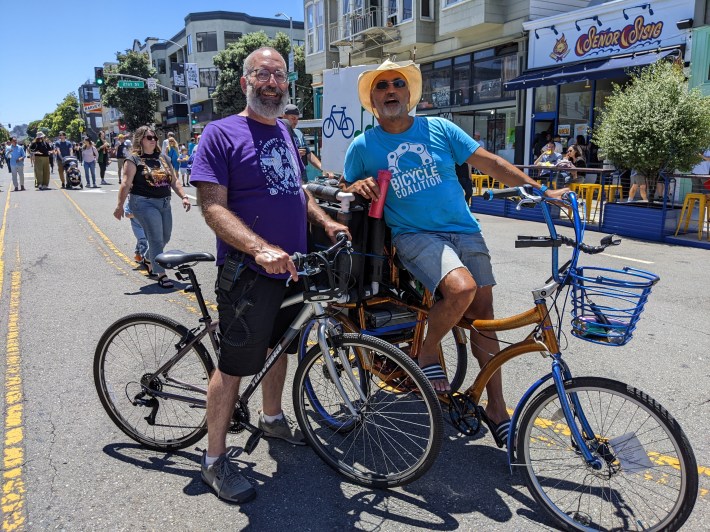
Radulovich was, of course, referring to the city's now years-long delays in constructing approved protected bike lanes to stop the non-stop double parking, confrontations, and frequent collisions that have turned Valencia, ostensibly San Francisco's bicycle corridor through the Mission, into a cluster f*ck. SFMTA had a booth at the event, promoting a new round of outreach and surveys for a "Valencia Bikeway Improvement Project," a revised plan for 15th to 24th.
"We're having to redesign it for shared spaces," said SFMTA Director Jeffrey Tumlin, who was riding through the event. "We're trying to understand the needs of business owners."
"The goal is to quick build and make adjustments."
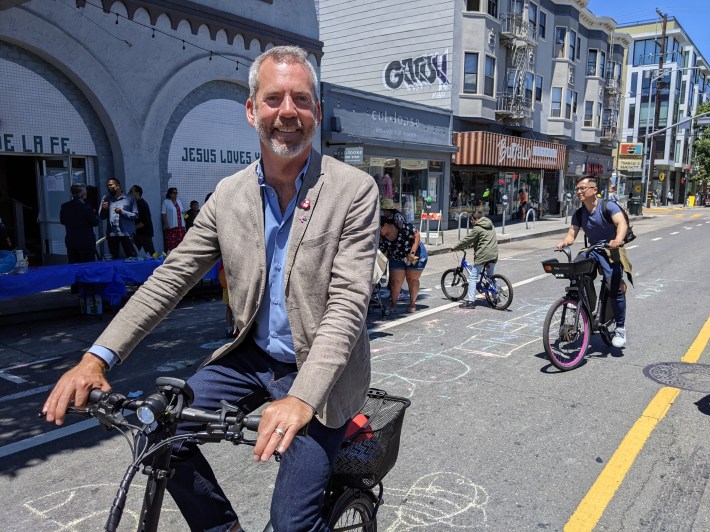
Wasn't that the point of building "pilots" from Market to 15th in 2019 and from Cesar Chavez to Duncan in 2017? Yes, the pandemic changed things a bit, but riding on Valencia is still fundamentally the same high-stress, dangerous street it was before.
Tumlin demurred from past commitments to install protected bike lanes by the end of this year, saying only that "the funding is in place." The timeline on a flyer handed out by SFMTA indicates that "public hearings" and "project approvals & implementation" won't begin until late this year. The agency is also calling this phase, from 15th to 24th, another "pilot" that would be "evaluated" and "assessed." And there still won't be protected bike lanes from 24th to Cesar Chavez. Presumably that will be saved for a future pilot?
Meanwhile, other cities--Santa Barbara is the nearest one--have figured out how to quickly convert main business corridors into successful, car-free nirvana without years and years and years of "outreach" and piecemeal pilots. Besides, as Streetsblog has reported previously, outreach is routinely ignored and infrastructure is torn back out when motorists complain, without further public hearings.
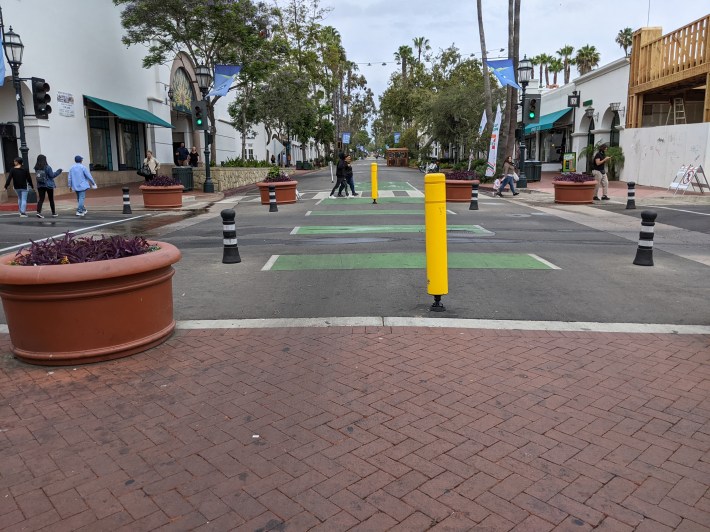
From Streetsblog's view, the suggestion that loading and additional parklets overly complicated the plans-in-hand from 2020 doesn't seem credible. SFMTA's current pilot installations on Valencia includes protected bike lanes diverting around parklets (albeit with plastic posts that need replaced with concrete barriers). See the picture below of the bike lane diverting around the parklet in front of Four Barrel coffee. They installed loading zones at Friends School and Millennium School Valencia and they work fine. There's also plenty of Dutch examples to follow.
And during Sunday Streets motorists parked on side streets and walked to pick up food and make deliveries.
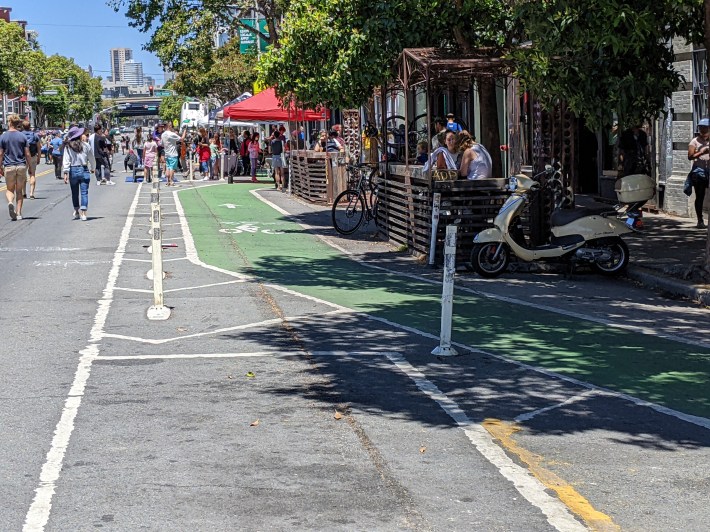
Certainly, a car-free Valencia modeled on Santa Barbara's State Street or La Rambla in Barcelona would be welcome. But people are getting hurt regularly on Valencia. The city has a moral obligation to install the Dutch-style, protected bike lane design plan they have in hand by year's end and sort out the car-free question afterwards (if they really can't get it solved immediately).
As Radulovich said, "go Dutch or go home" when it comes to street design and keeping vulnerable road users safe.
More pictures on Sunday's open-streets event on Valencia below:

